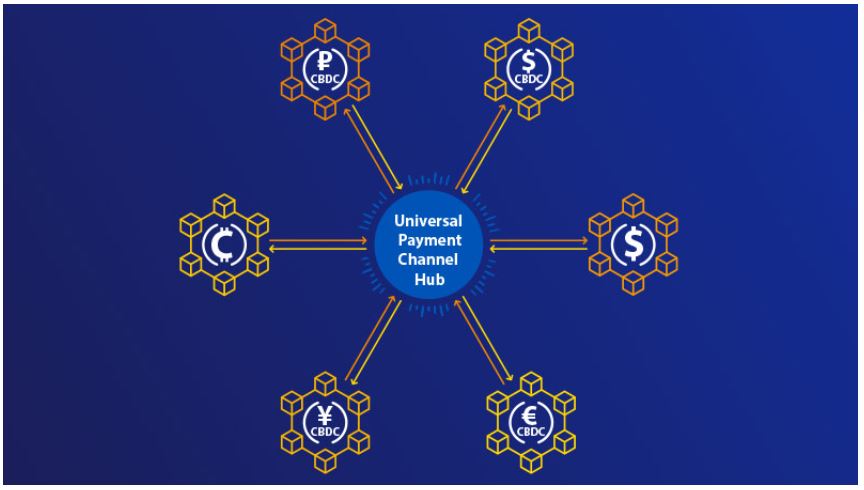Visa has unveiled a paper outlining the development of a protocol to make cross-border payments with Central Bank Digital Currencies (CBDCs) and stablecoins from any blockchain connected to the network.
According to a post by the payment colossus, the company is in the midst of developing a protocol to send digital currencies between blockchains in order to operate as a “universal payment channel” (UPC). This dedicated payment channel will connect CBDC networks between countries, as well as linking CBDCs with private stablecoin networks.
The Visa research team originally began working on the UPC concept in 2018, developing an interoperability framework that would run independently of the underlying blockchain mechanisms.
Catherine Gu, global CBDC product lead at Visa, stated that the key problem it was looking to solve is that of interoperability, to “get different digital currencies, relying on different tech stacks and protocols, with different compliance standards and market requirements to ‘talk’ to each other in a wider network of value”.

This is a much longer-term future thinking concept around a way that Visa could potentially help become a bridge between one digital currency on one blockchain and another digital currency on another blockchain.
Cuy Sheffield, Visa’s head of crypto
The Future of Blockchain is Interoperable
The paper developed by Visa’s R&D team posits the UPC as a hub interconnecting multiple blockchain networks and allowing for secure transfer of digital currencies. The point of the hub is to allow central banks, businesses and consumers to seamlessly exchange value, no matter the form factor of the currency.
We believe that for CBDCs to be successful, they must have two essential ingredients: a great consumer experience and widespread merchant acceptance. It means the ability to make and receive payments, regardless of currency, channel, or form factor. That’s where Visa’s UPC concept comes in.
Catherine Gu, global CBDC product lead, Visa
Visa highlights the need for a UPC due to the large number of digital currencies and the necessity for a common network. The UPC’s specialised payment channels would be established off the blockchain and leverage smart contracts to communicate with the various blockchain networks. This is done to deliver high transaction throughput securely and reliably while improving overall speeds.
Due to this gap, Visa has openly shared how the mechanics of the UPC will work, along with policy guidelines for central banks and regulators on the implication of this research.
In December 2020, Visa partnered with Circle to connect its merchants with Ethereum-based US Dollar Coins. Various other blockchain projects are also working to solve the interoperability issue.
Why CBDCs Need Cross-Chain Interoperability
Over the past two years many central banks around the world have been exploring CBDCs, a digital form of central bank money that can be used directly by consumers, merchants and financial institutions.
Imagine a world where everyone at the table is using a different type of money – some using a central bank digital currency (or CBDC) like Sweden’s eKrona, others preferring a private stablecoin like USDC […] now imagine all this happening in real-time, across multiple networks, and compatible with multiple digital wallets.
VISA
In order to process a payment with various currencies, there needs to be a layer where all wallets and protocols can communicate with each other before processing the payment for the merchant. As part of developing the UPC concept, Visa has deployed its first-ever sample smart contract on Ethereum’s Ropsten testnet. The smart contract shows a payment channel that accepts both ether (ETH) and the USDC stablecoin.
What concerns many blockchain supporters is the idea of having a centralised node authorising transactions. However, the Visa paper states that “clients register with a UPC hub to route their transactions to other clients. Note that this routing requires zero trust to be placed on the UPC hub (the UPC hub does not need to be trusted like a central intermediary).”
Disclaimer:
The content and views expressed in the articles are those of the original authors own and are not necessarily the views of Crypto News. We do actively check all our content for accuracy to help protect our readers. This article content and links to external third-parties is included for information and entertainment purposes. It is not financial advice. Please do your own research before participating.
Credit: Source link






















